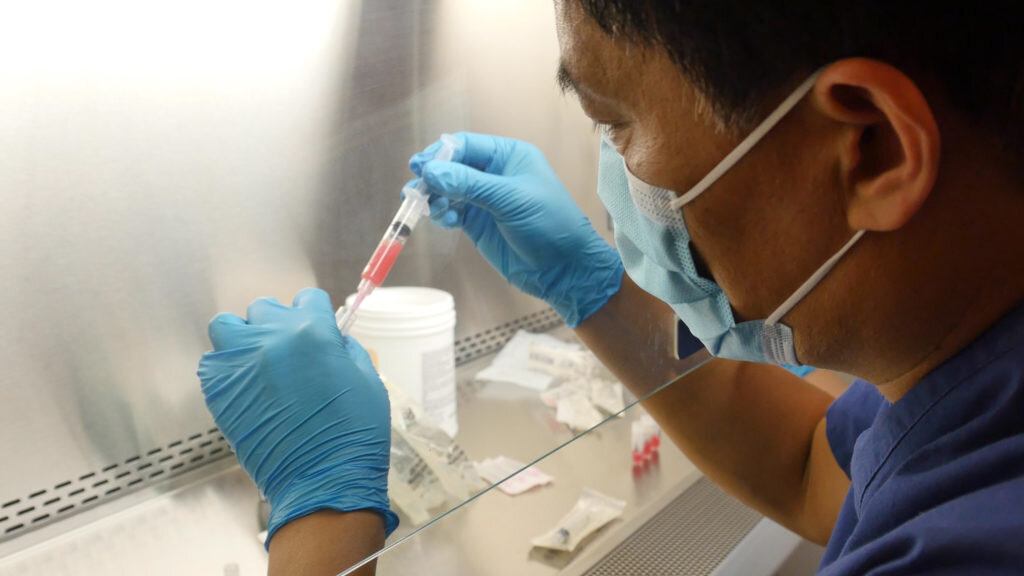Why President Biden Must Act on Stem Cells
/By A. Rahman Ford, PNN Columnist
In a recent Forbes article, Jake Becraft argues that biomedical manufacturing must receive similar federal investment as technology infrastructure if all Americans are to have equitable access to emerging medical technologies like stem cell therapy.
Becraft notes that -- unlike the rollout of 5G wireless technology, which received substantial public and private investment -- healthcare distribution bottlenecks have received much less attention.
“If 70% of Americans should have access to 5G, why shouldn’t they also have access to live-saving therapeutics?” asks Becraft, who is the founder and CEO of Strand Therapeutics. “What good is gene therapy to cure blindness if only those with an extra $850,000 in their pocket and home near an urban center can access it?
“If we invest in the fair and equitable distribution of life-saving therapeutics across the country, and not just in the medical hubs of major cities, we could make cell and gene therapies as accessible as we have aimed to make 5G. Cures shouldn’t exist only for the privileged.”
For Becraft, true next-generation health access requires a revolutionizing and re-imagining of healthcare manufacturing and delivery, which would consequently speed the development of cell therapies.
A Broken Stem Cell Infrastructure
Becraft’s argument cuts to the heart of the stem cell accessibility divide, which is especially true with regard to autologous stem cells that are derived from a patient’s own body fat, bone marrow and other tissues.
Harvesting, processing and administering autologous stem cells is relatively simple, cheap and can be done in one day. Clinicians around the world have been using these therapies to treat or even cure autoimmune diseases and orthopedic problems that are often poorly treated with conventional medical modalities,
But autologous stem cells are currently heavily regulated in the U.S. because the Food and Drug Administration considers a person’s own stem cells to be “drugs” and thus subject to the long, arduous and expensive clinical trial process.
Other countries have more relaxed stem cell regulations. This means that professional athletes and wealthy people can simply fly to Europe or Columbia to receive potentially life-saving therapy. Meanwhile, the average American – many of whom are financially devastated by COVID-19 – is left to languish and suffer.
Clearly, the incrementalism and gradualism that has for too long pervaded and permeated medical technological progress must give way to thoughtful, purposeful and conscious revolutionary reconsideration.
A ‘New Deal’ for Stem Cells
Up to this point in his nascent administration, President Biden has not made stem cell accessibility and affordability a priority. Yes, there are several clinical trials underway for stem cell candidates to treat the symptoms of COVID-19. And, to the FDA’s credit, these trials are being expedited.
But thick federal bureaucratic fog still stifles the commercialization of emerging stem cell modalities that Americans in pain so desperately need. The FDA has yet to approve a single stem cell product as a treatment for arthritis or any orthopedic condition.
Almost one year ago, I wrote that then FDA Commissioner Stephen Hahn had the opportunity to implement a stem cell “New Deal” that would provide much-needed clarity to the regulatory landscape by vesting the states with primary authority over autologous stem cells.
The “New Deal” baton has now been passed from the Trump administration to President Biden, who can help lead us the finish line of stem cell accessibility and affordability. His administration has an opportunity to make good on its pledge to do right by the American citizenry it has pledged to serve. President Biden, the American people are counting on you.
A. Rahman Ford, PhD, is a lawyer and research professional. He is a graduate of Rutgers University and the Howard University School of Law, where he served as Editor-in-Chief of the Howard Law Journal. Rahman lives with chronic inflammation in his digestive tract and is unable to eat solid food. He has received stem cell treatment in China.







